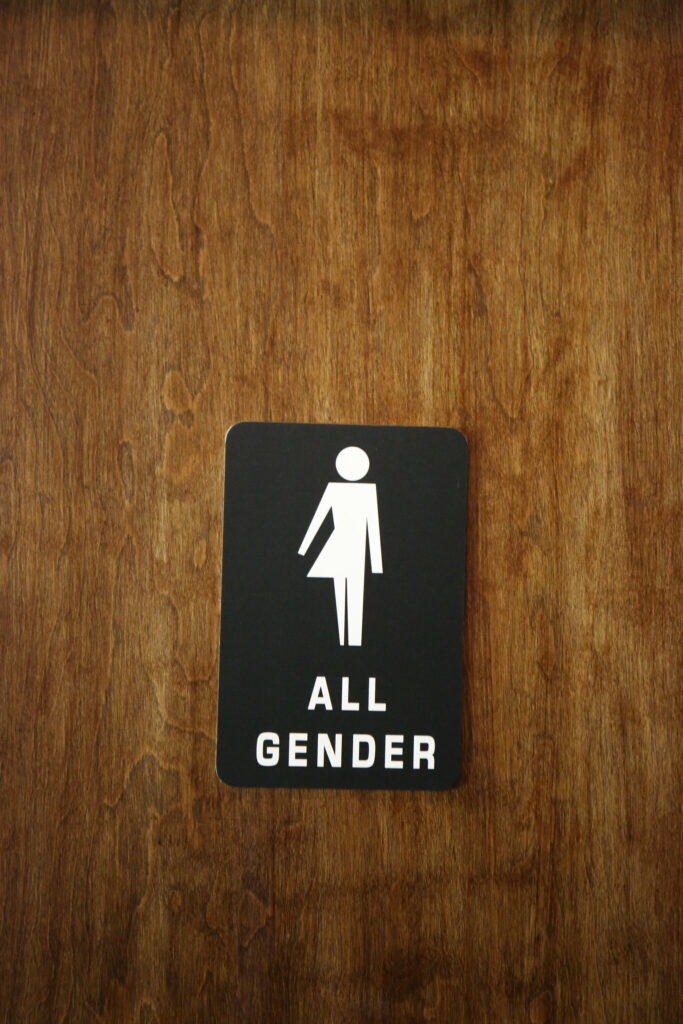by: Marcia Zug
Men and women are not equal in immigration law, and the Supreme Court has long upheld these distinctions. In fact, since 1977, the Court has heard four immigration-based sex discrimination cases and sustained the challenged provision every time.[1] The Court even upheld one provision twice, just so it could more fully articulate the basis for its decision.[2] This summer, the Court decided a fifth immigration-based sex discrimination challenge.[3] The case, Sessions v. Morales-Santana[4], concerned an Immigration and Nationality Act (INA) provision distinguishing between unmarried fathers and mothers with regard to the transmission of citizenship.[5] The Court had not previously considered this particular provision. Nevertheless, given the Court’s history of upholding similar gender distinctions, Morales-Santana seemed poised to become the fifth case affirming the constitutionality of immigration law’s gender distinctions. Instead, the Court declared the challenged provision unconstitutional.[6]
As the cases on transmission of citizenship demonstrate, gender plays a surprisingly important, and arguably unjust, role in immigration law. Explicit gender divisions and gender stereotypes are widespread.[7] However, prior to Morales-Santana the Court consistently upheld these distinctions.[8] Consequently, despite the limited scope of Morales-Santana (it only applies to a single INA provision and does not overturn the Court’s previous cases), the case is important. It indicates that the Court is no longer willing to excuse or attempt to rationalize immigration law’s widespread gender discrimination.
Immigration law’s long history of gender bias, means the possibilities for discrimination claims are numerous. Accordingly, it may be no coincidence that Morales-Santana, which finally confirms gender as an effective means of challenging discriminatory immigration laws, was decided only days before Trump v. International Refugee Assistance Project.[9] International Refugee limited the scope of the government’s proposed travel ban[10] and demonstrated the Court’s concern with the current administration’s attempts to restrict immigrant rights. Nevertheless, it is the Morales-Santana decision that provides the means to actually challenge the application of these restrictive immigration policies.[11]
The relevance of a gender discrimination claim to the travel ban is not immediately obvious. Both the ban and its exemptions are gender neutral.[12] However, family-based exceptions to immigration restrictions, similar to the ones applicable to the travel ban, have long been based on prejudices and stereotypes about the relative benefits of male versus female immigrants.[13] If the State Department’s visa determinations mimic these historic practices, this could serve as the basis for a gender discrimination challenge, and there are already strong indications that gender will play an important role in the visa decision-making process.
Initially, the travel ban excluded all travelers from six countries: Yemen, Somalia, Iran, Libya, Sudan, and Syria.[14] This blanket ban was then challenged in International Refugee, and the Court held it must include exemptions for “foreign nationals who have a credible claim of a bona fide relationship with a person or entity in the United States.”[15] The Court then added that employment, educational, or familial relationships could all potentially meet the definition of “bona fide relationship.”[16]
After receiving the International Refugee Court’s decision, the State Department issued a memo declaring the family relationship exemption limited to “close family.”[17] It then defined “close family” as “a parent (including parent-in-law), spouse, child, adult son or daughter, son-in-law, daughter-in-law, sibling, whether whole or half. This includes step relationships.”[18] Other family relationships including “grandparents, grandchildren, aunts, uncles, nieces, nephews, cousins, brothers-in-laws and sisters-in-law, fiancés and any other ‘extended’ family members” were excluded.[19] When asked where these distinctions originated, the government stated they were based on the long-standing family preference categories of the INA.[20]
The State Department’s focus on the family relationship category, as opposed to the educational or employment category, is understandable.[21] Most U.S.-bound immigrants and refugees have at least one family member in the U.S.,[22] and it is likely that the majority of travel ban exemptions will arise under this group.[23] Consequently, by limiting the class of qualifying relationships, the State Department can significantly reduce the number of aliens eligible for these exemptions.[24]
Critics of the ban were quick to condemn this strategy. They objected to the government’s narrow definition of close family relationships and to the exclusion of fiancés and grandparents in particular.[25] The State Department’s reaction to these criticisms was revealing. Shortly after issuing the memo, the State Department revised the qualifying relationship definition to include fiancés,[26] but it refused to consider including grandparents.[27] It then defended this distinction by arguing that the inclusion of fiancés, but not grandparents, was supported by immigration history.[28] This is correct.[29] However, the history the Department relied upon is highly problematic.
Historically, fiancé exemptions were limited to females and grounded in gender stereotypes that deprived women of their rights and agency.[30] Beginning in 1855, U.S. immigration law granted foreign women married to American men automatic American citizenship.[31] The 1855 Act was based on the doctrine of coverture, which decreed that married women had no right to a legal or political identity of their own. According to this doctrine, a husband and wife were legally one person and that person was the man. [32] A married woman’s identity was treated as “covered” by her husband’s; thus, when a foreign woman married an American citizen she became an American citizen as well.[33] Similarly, because the law of coverture stated that a woman’s primary loyalty was to her husband, marriage to an American man was seen as a demonstration of her commitment to America and her worthiness to become a citizen.[34]
Tellingly, the reverse was never true. Under the doctrine of coverture, the male identity was considered legally dominant. As a result, marriage to an American woman could not change a foreign man’s citizenship.[35] Foreign husbands still needed to earn their citizenship through further proof of loyalty to the U.S.[36] In 1907, coverture’s ideas regarding marriage and female citizenship were codified in The Expatriation Act, which declared that American citizen women married to foreign men must share their husband’s alien status.[37] The Act treated these wives as having voluntarily relinquished their citizenship through marriage, and it only permitted them to regain their citizenship if their husbands became citizens.[38]
The Expatriation Act was repealed in 1922,[39] but the belief that female patriotism and loyalty was derivative did not disappear.[40] In fact, throughout the twentieth century, Congress repeatedly passed laws exempting foreign women, particularly those in relationships with American men, from otherwise applicable immigration restrictions. Some of the most notable examples include the 1924 Quota Act, which imposed draconian quotas on immigration from certain countries but exempted foreign-born wives,[41] and the 1945 the War Brides Act, which allowed soldiers’ alien wives to enter as non-quota immigrants and also made exceptions for racially excludable Japanese and Korean wives.[42] In the 1950s, the spousal and fiancé exemptions became gender neutral, but they still disproportionately benefitted female immigrants.
Women are more likely than men to immigrate through family connections.[43] Consequently, by prioritizing family connections, gender-neutral immigration laws continued to ensure that foreign women remained the primary beneficiaries of America’s family-based immigration system.[44] Some examples of modern female-benefitting immigration laws include the 1952 INA, which set up the current family-based immigration system;[45] the 1970 INA amendments creating the K-1 fiancé visa;[46] and the current version of the INA which continues to prioritize family-based immigration through benefits such as quota exemptions,[47] special visas,[48] and fast-tracked citizenship.[49]
Women have been the majority of arriving immigrants since the 1930s[50] and, as the above examples demonstrate, the change to gender-neutral family preferences has made little difference.[51] Modern immigration law’s family preference remains mired in America’s long history of coverture and the belief that female immigrants are more trustworthy than foreign men. These stereotypes benefit female immigrants, but they also make the family preference provisions constitutionally suspect.[52] In addition, laws relying on these provisions, such as the travel ban, should also be viewed with suspicion.
The Supreme Court has long held that laws distinguishing between men and women based on outdated understandings of their “talents, capacities, or preferences” are contrary to constitutional gender principles.[53] Immigration exemptions that benefit women based on the belief that women have no national allegiances of their own violate these constitutional principles. Yet, despite these well-settled principles, for decades, the Court shielded immigration law from gender-based challenges. This is finally no longer the case. In Morales-Santana, the Court clearly held that immigration law does not exempt the government from the rule that “overbroad generalizations about the way men and women are” are unconstitutional.[54]
If the travel ban exemptions result in a highly uneven distribution of male and female visa denials, this disparity, combined with the gendered history of family-based preferences, should be enough to support a class action by the American family members of rejected aliens. The President’s own statements[55] and policies[56] indicate that the true focus of the ban is Arab men, and consequently, there is a strong argument that the travel ban is a continuation of immigration law’s long-standing and constitutionally problematic preference for female immigrants based on their presumed greater loyalty to the U.S.
While a class action challenge to the application of the travel ban would be difficult, it could succeed because it would not focus on any individual visa denial. Rather, it would challenge the overall visa decision-making process. This distinction is crucial because under Supreme Court case law, once the State Department has made a visa determination, it is almost impossible to contest. As recently as 2015, the Court reaffirmed the doctrine of consular non-reviewability, which bars judicial review of visa denials. The case, Kerry v. Din[57], concerned an Afghani husband denied a visa to join his American citizen wife. According to the government, the husband presented a national security risk. Din and her husband disagreed with this assessment, and they requested access to the information upon which it was based. The government refused, and the couple then brought suit challenging the husband’s visa denial. The district court held the doctrine of consular non-reviewability prevented review of their case, and the Supreme Court agreed. According to the Court, visa determinations, even ones that are potentially unjust or incorrect, are unreviewable.
Without more information, it is impossible to know if the visa decision in Din was reasonable. However, similar cases have shown how the doctrine of consular non-reviewability can shield erroneous or biased decisions from review. One of the most famous visa denial cases is Knauff v. Shaughnessy.[58] In this case, the foreign-born wife of a returning American citizen soldier was denied the right to view the evidence used to bar her entry into the U.S.[59] According to the government, Knauff had been a Nazi collaborator and provided the German military with classified information.[60] Knauff denied these claims, but without access to the government’s information, she was unable to effectively refute the charges.[61] Luckily, Knauff’s case garnered national attention, and Congress eventually conducted a hearing to review the claims against her.[62] This review revealed that the source of the information was a spurned girlfriend of Knauff’s husband who desired revenge.[63] After obtaining this information, Knauff was able to demonstrate the falsity of the accusation, and she was then granted permission to enter the U.S.[64]
Knauff’s case has a happy ending, but it reveals how easily visas can be unjustly denied and how difficult it is for aliens to contest these decisions. Knauff involved a single unfair visa denial; the travel ban creates the possibility of hundreds or thousands. Kerry v. Din confirms that these individual decisions are shielded from judicial review, but it does not prevent them from being challenged as a group. Consequently, the best, and perhaps only, means of challenging the application of the travel ban will be through a class action based on gender discrimination.
Initial travel ban lawsuits focused on racial and religious discrimination, but changes to the current ban weaken these arguments. Moreover, if the ban goes into effect, such arguments will be entirely inapplicable. The newest version of the travel ban, which was released after the previous version expired, attempts to avoid charges of race and nationality discrimination by including two non-Muslim majority countries, Venezuela and North Korea.[65] Opponents argue that the addition of these two countries does not solve the ban’s constitutional problems. They argue that the ban’s primary purpose remains the prohibition of Muslim immigrants,[66] and they further add that the inclusion of Venezuela and North Korea does nothing to alleviate concerns that the ban discriminates based on national origin.[67] For the moment, these challenges are succeeding[68], but many experts believe the ban will ultimately be upheld.[69] Once that happens, arguments based on religious or national origin discrimination will be ineffective.
The majority of people affected by the ban will be both Arab and Muslim, making it difficult—or maybe impossible—to demonstrate religious or racial discrimination in the pattern of visa denials.[70] Gender discrimination claims do not have this problem. Significant numbers of both men and women are likely to apply for visas. Consequently, a substantial gender difference in the issuance of visas, combined with the history of discriminatory female preferences and the government’s acknowledged focus on Arab men, provides a strong basis for a gender discrimination challenge.
Whether such a challenge would ultimately succeed is unclear, but the possibility of such a suit demonstrates the new opportunities created by the Morales-Santana decision. For too long, the Court has allowed stereotypes about the relative desirability of male and female immigrants to influence immigration law. The result is an immigration system that favors women and can be manipulated and exploited to exclude men. The State Department’s implementation of the travel ban is likely to proceed in this fashion. However, Morales-Santana suggests that the Court might find such actions unconstitutional. This is heartening. As U.S. immigration becomes increasingly restricted, it is encouraging to realize the tools to fight these restrictions are expanding.
[1] See Flores-Villar v. United States, 564 U.S. 210 (2011) (splitting 4-4 and refusing to recognize an equal protection challenge to former provisions of the Immigration and Nationality Act (INA) which imposed an additional residence requirement for an unwed citizen-father to confer U.S. citizenship on a child born abroad); Nguyen v. INS, 533 U.S. 53, 70–71 (2001) (finding the paternity obligations were “minimal” and that the governmental interest in these distinctions served “important objectives.”); Miller v. Albright, 523 U.S. 420, 441 (1998) (finding the different treatment of unwed citizen mothers and unwed citizen fathers was “eminently reasonable” and “justified by important Government interests”); Fiallo v. Bell, 430 U.S. 787, 798 (1977) (reasoning that since these distinctions were “policy questions entrusted exclusively to the political branches of our Government,” the Court had “no judicial authority to substitute [its] political judgment for that of Congress”).
[2] Nguyen concerned the same statutory provision as Miller. See Michelle L. Sudano, Note, Crossing the Final Border: Securing Equal Gender Protection in Immigration Cases, 21 Wm. & Mary Bill Rts. J. 957, 968 (2013) (“[B]oth cases addressed the constitutionality of the same statute and the Nguyen court did not specify which issue was novel to the Nguyen case; it is more likely that the Court chose to hear Nguyen three terms after hearing Miller because it meant that the Court would have a chance to clarify the Miller ruling and eliminate the circuit split caused by the fractured opinion therein.”).
[3] In Kerry v. Din, 135 S. Ct. 2128 (2015), Justice Scalia did hint that future gender discrimination challenges might be different. Specifically, while discussing the history of the different treatment of male and female citizens, he wrote, “Modern equal-protection doctrine casts substantial doubt on the permissibility of such a symmetric treatment of women citizens in the immigration context, and modern moral judgment rejects the premises of such a legal order.” Id. at 2136.
[4] 137 S. Ct. 1678 (2017).
[5] The statute in effect at Luis Morales-Santana’s birth in 1962 required that an out-of-wedlock father have ten years of physical presence in the U.S., five years of which had to be after the father’s fourteenth birthday. Id. at 1686-87. In contrast, an out-of-wedlock mother had to have continuous physical presence in the U.S. for only one year at any time prior to the child’s birth. Id. at 1687.
[6] To reach its decision, the Court did not overrule the previous line of cases upholding these gender distinctions. Instead, it carved out an exception for the challenged provisions. As the Court noted, there were two ways it could fix the provision’s discriminatory result: either have the more lenient residency requirements apply to American citizen fathers or apply the more stringent one to mothers. See id. at 1698. The Court chose the latter, leading a number of commentators to dub the decision the “mean remedy.” See, e.g., Will Baude, The Judgment in ‘Morales-Santana’ (and a Supreme Court Symposium), Wash. Post (June 13, 2017), https://www.washingtonpost.com/news/volokh-conspiracy/wp/2017/06/13/the-judgment-in-morales-santana-and-a-supreme-court-symposium/?utm_term=.8dfecf900579. See also Ian Samuel, Morales-Santana and the “Mean Remedy,” PrawfsBlawg (June 12, 2017, 5:04 PM), http://prawfsblawg.blogs.com/prawfsblawg/2017/06/scotus-symposium-morales-santana-and-the-mean-remedy.html.
[7] See, e.g., Charles Roth, Immigration Symposium: Prelude to a Turning Point, SCOTUSblog (June 29, 2017, 12:25 PM), http://www.scotusblog.com/2017/06/immigration-symposium-prelude-turning-point/ (“The INA allows a citizen parent to convey American citizenship automatically, under technical rules that have shifted over the years. One consistent rule for the past 70 years is that it has been easier for an unmarried U.S.-citizen mother to convey automatic citizenship to her child than for an unmarried father or married parent. The difference is the length of time that the parent must have been present in the U.S. before having the child.”).
[8] In these cases, the Court upheld the distinctions as justified by the biological differences between men and women or as part of Congress’s plenary power over immigration. Both justifications have been subject to significant criticism, particularly plenary power, which is seen as judicial permission for the government to violate constitutional norms. Scholarly criticism of the doctrine is significant. See, e.g., T. Alexander Aleinikoff, Semblances of Sovereignty: The Constitution, the State, and American Citizenship 151 (2002); Gerald L. Neuman, Strangers to the Constitution: Immigrants, Borders, and Fundamental Law 189 (1996); Kif Augustine-Adams, The Plenary Power Doctrine after September 11, 38 U.C. Davis L. Rev. 701, 705 (2005); Nora V. Demleitner, How Much Do Western Democracies Value Family and Marriage?: Immigration Law’s Conflicted Answers, 32 Hofstra L. Rev. 273, 299–300 (2003); Linda Kelly, Preserving the Fundamental Right to Family Unity: Championing Notions of Social Contract and Community Ties in the Battle of Plenary Power Versus Aliens’ Rights, 41 Vill. L. Rev. 725, 734 (1996).
[9] 137 S.Ct. 2080 (2017).
[10] Given the closeness of the two decisions, it may also be significant that the Morales-Santana Court refused to accept a quasi-national security justification for the different treatment of men and women. The government argued that the distinctions between mothers and fathers were justified based on legitimate concerns regarding foreign influence over American citizens. Specifically, the government argued the distinctions are justified because if a child has only one parent and that parent is a U.S. citizen, the child will be influenced only by a person with U.S. citizenship. But if the child has two parents, one of whom is not a U.S. citizen, the child will be subject to the parental influence of a person with the interests of a “foreign citizenship.” Presuming that mothers have greater influence over their children than fathers, the government argued that the different treatment was justified. Brief for Petitioner at 10, Lynch v. Morales-Santana, 136 S. Ct. 2545 (2016) (No. 15-1191), 2016 WL 4436132, at *5.
[11] In addition to instituting the travel ban, the President has also increased the arrest of undocumented immigrants. See Aria Bendix, Immigration Arrests Are Up, but Deportations Are Down, The Atlantic (May 17, 2017), https://www.theatlantic.com/news/archive/2017/05/under-trump-immigrants-arrests-are-up-but-deportation-is-down/527103/. He has also announced his intention to reduce legal immigration by half. See Andrew Soergel, Report: Trump Pushing to Cut Annual Immigration by Half, U.S. News, (July 13, 2017, 11:35 AM), https://www.usnews.com/news/national-news/articles/2017-07-13/report-trump-pushing-to-cut-annual-immigration-by-half.
[12] See Exec. Order No. 13,769, 82 Fed. Reg. 8977 (Feb. 1, 2017).
[13] See generally Patricia Hatch, U.S. Immigration Policy: Family Reunification, League of Women Voters, http://lwv.org/files/ImmigrationStudy_FamilyReunification_Hatch.pdf (ranking the family based exceptions by preference to award visas).
[14] Initially, Iraq was also included but was removed in the revised version of the order. See Kevin Liptak, Why Iraq Was Removed from the Revised Travel Ban, CNN.com (Mar. 16, 2017, 5:06 PM), http://www.cnn.com/2017/03/06/politics/iraq-travel-ban/index.html.
[15] Trump v. International Refugee Assistance Project, 137 S.Ct. 2080, 2088 (2017).
[16] Id.
[17] See Gardiner Harris & Ron Nixon, Stepsister, Yes; Grandma, No: U.S. Sets Guidelines for Revised Travel Ban, N.Y Times (June 28, 2017), https://nyti.ms/2uk1M2w.
[18] Id.
[19] Id.
[20] Carol Morello, Travel Ban Takes Effect as State Department Defines “Close Family”, Wash. Post (June 29, 2017), http://wapo.st/2toCVxB?tid=ss_mail&utm_term=.f88bd8519383 (“Senior administration officials said they drew up the list of close relationships based on the definition of family in the Immigration and Nationality Act of 1965.”).
[21] See Jessica Feinberg, The Plus One Policy: An Autonomous Model of Family Reunification, 11 Nev. L.J. 629, 630 (2011) (“The majority of individuals able to immigrate can do so because they share relationships with U.S citizens or lawful permanent residents (LPRs) that render them eligible under the ‘family reunification’ admission category.”); William L. Pham, Comment, Section 633 of IIRIRA: Immunizing Discrimination in Immigrant Visa Processing, 45 UCLA L. Rev. 1461, 1466 (1998) (“Family-sponsored immigration is by and large the most significant category of visa issuance: It comprises over 70% of all immigration to the United States.”).
[22] Morello, supra note 20 (“More than half of all U.S.-bound refugees typically have some family members in the United States, although in some cases the relatives may be in the excluded category.”).
[23] Some scholars have even suggested these exceptions could encompass the majority of travelers. Most travelers entering the U.S. do so for work, school, or to visit family. See id.
[24] See id.
[25] See S.M., The Grandma Ban: The Travel Order Rules Face a Court Challenge, The Economist (June 30, 2017), https://www.economist.com/blogs/democracyinamerica/2017/06/grandma-ban.
[26] Explaining the change, a state department official simply stated, “Upon further review, fiancé will now be included as close family members.” Melanie Zanona, White House Reverses Course on Including Fiancés in Travel Ban, The Hill (June 29, 2017, 9:39 PM), http://thehill.com/policy/transportation/340193-white-house-reverses-course-on-including-fiances-in-trump-travel-ban.
[27] This decision was eventually appealed to the Supreme Court, which held that the travel ban exemptions must be broader than the INA categories and could include grandparents. Trump v. International Refugee Assistance Project, 137 S.Ct. 2080, 2088–89 (2017).
[28] See generally Naturalization Act, ch. 71, § 2, 10 Stat. 604 (1855) (securing U.S. citizenship for any alien woman who is lawfully married to a man of U.S. citizenship).
[29] Id.
[30] Cf. Sabrina Balgamwalla, Bride and Prejudice: How U.S. Immigration Law Discriminates Against Spousal Visa Holders, 29 Berkeley J. Gender, L. & Just. 25, 65 (2014) (acknowledging that mail-order brides lack information about their future spouse, the U.S. legal system, and their rights). See generally Marcia Zug, Buying A Bride: An Engaging History of Mail-Order Marriage (2016) (describing the history of mail-order marriage in the United States and the laws encouraging foreign wives and fiancées).
[31] Naturalization Act, ch.71, § 2, 10 Stat. 604, 604 (1855).
[32] See generally Bradwell v. Illinois, 83 U.S. (16 Wall.) 130, 141 (1873) (“[I]t became a maxim of [the common law] that a woman had no legal existence separate from her husband, who was regarded as her head and representative in the social state . . . .”).
[33] “One congressional sponsor of the 1855 Act, Francis Cutting of New York, asserted that ‘by the act of marriage itself the political character of the wife shall at once conform to the political character of the husband.’” Leti Volpp, Divesting Citizenship: On Asian American History and the Loss of Citizenship Through Marriage, 53 UCLA L. Rev. 405, 421 (2005). “[M]arriage to a U.S. citizen husband was considered an act of political consent to the U.S. nation state” and, in fact, it was considered the only way a married woman could “relate to the state.” Id. at 421–22.
[34] See Linda K. Kerber, No Constitutional Right to Be Ladies: Women and the Obligations of Citizenship 33-38 (1998).
[35] Balgamwalla, supra note 30, at 31–32.
[36]Tanya Ballard Brown, That time American Women Lost Their Citizenship Because They Married Foreigners, NPR: Code Switch (Mar. 17, 2017), http://www.npr.org/sections/codeswitch/2017/03/17/520517665/that-time-american-women-lost-their-citizenship-because-they-married-foreigners.
[37] The law required women to submit to their husbands’ authority and adopt his political allegiances. Consequently, foreign women married to citizen men were considered incapable of presenting a national security risk because, regardless of their previous loyalties, once married, they would naturally adopt their husbands’ views and loyalties. See, e.g., Brief for Professors of History, Political Science and Law as Amici Curiae for Respondents at 14, Morales-Santana v. Lynch, 136 S. Ct. 2545 (2016) (No. 15-1191), 2016 WL 5800340 (stating, “In the very design of the derivative citizenship statute, as it applied to mixed-nationality married couples, one can see the imprint of the male headship principle and the corresponding belief that the wife and children derived their political and cultural character from the husband-father”).
[38] Expatriation Act, ch. 2534, § 3, 34 Stat. 1228, 1228 (1907) (providing that “any American woman who marries a foreigner shall take the nationality of her husband”). See also Mackenzie v. Hare, 239 U.S. 299, 311 (1915) (upholding the constitutionality of the Expatriation Act).
[39] Cable Act, ch. 411, § 3, 42 Stat. 1021, 1022 (1922). This Act did not apply to women who married men unable to naturalize; these women still lost their citizenship. Volpp, supra note 33, at 433 (noting this group was primarily Asian men).
[40] Tied up in nineteenth-century notions about female loyalty and duty was the view that women were a civilizing influence and that they could help alleviate the threat of lawless or shiftless men. In the immigration context, wives were also seen as reducing the perceived racial purity threat posed by unmarried foreign-born men. Female immigrants tended to marry men of the same ethnic backgrounds while foreign-born men often did not. Consequently, foreign wives and fiancées reduced the number of foreign men marrying American-born women (particularly those of a different ethnic background) and were viewed as a solution to an immigration threat rather than contributing to it. For example, one study on German immigration between 1870 and 1910 noted “among immigrants who were single at migration, endogamy registered around 95% for German women, while it fluctuated closer to 50% for German men.” Donna Gabaccia, Seeking Common Ground 71–72 (1992).
[41] Under the Quota Act, immigrant wives were considered non-quota immigrants while immigrant husbands only received preferential status. Quota Act, ch. 190, §§ 4(a), (d), 13(c), 43 Stat. 153, 155, 162 (1924) (exempting wives and fiancées from race-based and national-origin immigration restrictions).
[42] The initial act was passed in 1945 and was amended in 1947 to make exceptions for racially excludable wives. In addition, in 1946, the Act was amended to include fiancées of war veterans. See GI Fiancées Act of June 29, 1946, ch. 520, 60 Stat. 339 (1946); War Brides Act of Dec. 28, 1945, ch. 591, 59 Stat. 659 (1945). See also Act of June 28, 1947, ch. 160, 61 Stat. 190 (1947) (extending the Attorney General’s authority to admit the fiancées of members of the American armed forces as temporary visitors); and see Act of July 22, 1947, ch. 289, 61 Stat. 401 (1947) (amending the War Brides Act).
[43] See e.g., Janet M. Calvo, Spouse-Based Immigration Laws: The Legacies of Coverture, 28 San Diego L. Rev. 593, 614 (1991) (citing Marion F. Houstoun et al., Female Predominance of Immigr. to the United States Since 1930: A First Look, 18 Int’l Migration Rev. 908, 909 (1984)); Nancy Root & Sharyn Tejani, Undocumented: The Roles of Women in Immigration Law, 83 Geo. L.J. 605, 613 (1994) (noting that “women account for the majority of spouse-based immigration”); Katherine Donato & Donna Gabaccia, Gender and Internal Migration 26 (2015) (noting that “heavily female migrations to the United States are from countries with major U.S. military bases, suggesting that family formation and unification…offer a powerful explanation for feminization”); and Ariel G. Ruiz et al., Immigrant Women in the United States, Migration Pol’y Inst. (Mar. 20, 2015), http://www.migrationpolicy.org/article/immigrant-women-united-states (noting men tend to immigrate for work and are a higher percentage of the undocumented population).
[44] See, e.g., Congr. Budget Office, Immigration Policy in the United States: An Update (2010) (demonstrating that the majority of immigration is family based).
[45] See, e.g., Stephen H. Legomsky, Immigration and Refugee Law and Policy 131 (2d ed. 1997) (stating that immigration laws enacted in 1952 promoted, for the first time, a comprehensive group of preferences in support of family unity).
[46] Immigration and Nationality Act § 101(a)(15)(K)(i), 8 U.S.C. § 1101 (2012).
[47] Spouses of citizen are non-quota immigrants while spouse of LPRs receive preference. See 8 U.S.C. § 1151(b) (2012) (noting the aliens not subject to numerical limitations). See also Peter H. Schuck, The Re-Evaluation of American Citizenship in Challenge to the Nation-State: Immigration in Western Europe and the United States 191, 205 (Christian Joppke ed., 1997) (“‘[I]mmediate relatives’ of citizens receive a preferred immigration status without regard to numerical quotas, and citizens’ siblings and adult children have a preferred status under the numerical quota system. In contrast, the spouses and unmarried children of resident aliens qualify for a numerically limited preference, and their siblings receive no preference at all.”).
[48] Some of these include the K-1 fiancé visa, 8 U.S.C. § 1101(a)(15)(K) (2012); U visas, 8 U.S.C. § 1101(a)(15)(U) (2012), for spouses that have been subject to domestic violence by a U.S. citizen or permanent resident; and the V visa, 8 U.S.C. § 1101(a)(15)(V) (2012), for spouses and minor children of permanent residents who have been waiting more than three years for admission (these spouses are not normally exempt from the yearly quotas).
[49] Spouses of U.S. citizens need only wait three years after receiving a green card before applying for citizenship rather than the normal five. INA § 319(a), 8 U.S.C § 1430(a) (2012).
[50]The feminization of immigration is not universal. As immigration scholar Donna Gabaccia has noted, “In none of the other major receiving nations, for example Canada, Australia, New Zealand, and Israel, does this pattern prevail.” Gabaccia, supra note 40, at 25.
[51] See, e.g., Sabrina Balgamwalla, Bride and Prejudice: How U.S. Immigration Law Discriminates Against Spousal Visa Holders, 29 Berkeley J. Gender L. & Just. 25, 32 (2014) (“[A]lthough the INA provisions are now gender-neutral on their face, most family-based immigrants are still women.”). See also Silvia Pedraza, Women and Migration: The Social Consequences of Gender, 17 Ann. Rev. Soc. 303, 306 (1991) (summarizing literature attributing global female migration, including to the U.S., to family relationships).
[52] See, e.g., Martha L. A. Fineman, Masking Dependency: The Political Role of Family Rhetoric, 81 Va. L. Rev. 2181, 2182 (1995) (suggesting that immigration law replicates the antiquated gender norms of coverture by recreating the traditional conception of the family; one that is headed by a husband who “performs as the head of the household, providing economic support and discipline for the dependent wife and children, who correspondingly owe him duties of obedience and respect).” See also Balgamwalla, supra note 51, at 31 (arguing “that the rights of immigrant women, including dependent spouses, are still limited by regulations that uphold antiquated gender norms”).
[53] United States v. Virginia, 518 U.S. 515, 533 (1996). Since the 1970s, the Court has repeatedly held sex-based distinctions based on presumed societal roles are highly suspect. See, e.g., Frontiero v. Richardson, 411 U.S. 677, 682–83 (1977); Craig v. Boren, 429 U.S. 190, 198–99 (1976); Reed v. Reed, 404 U.S. 71, 76–77 (1971).
[54] 137 S. Ct. at 1700-01.
[55] In a 2016 interview Bill O’Reilly asked Trump, “You want to profile Arab or Muslim men. How would that work?” To which Trump replied, “Well, we have no choice.” See Aaron Blake, Donald Trump Doesn’t Call his Position Racial Profiling. It is., Wash. Post: The Fix (Sept. 20, 2016), https://www.washingtonpost.com/news/the-fix/wp/2016/09/20/donald-trump-doesnt-call-his-position-racial-profiling-it-is/?utm_term=.8bfa614cb43a.
[56] The focus on Arab men, particularly in relation to women, can be seen in the fact that the travel ban contains a provision for the study and publication of information about honor killings in the U.S. The purpose of this provision is not a concern about domestic violence. The administration has slashed the budgets of other domestic violence programs, ones that affect far more women. According to a 2014 study, there are fewer than thirty honor killings a year while more than 1,500 women are murdered as a result of general domestic violence. Given these numbers, the administration’s focus on honor killings is clearly an attempt to cast Muslim men, particularly those in close family relationships, as especially dangerous. See Jesse Singal, Here’s What the Research Says About Honor Killings in the U.S., N.Y. Mag.: Daily Intelligencer (Mar. 6, 2017), http://nymag.com/daily/intelligencer/2017/03/heres-what-the-research-says-about-american-honor-killings.html.
[57] 135 S. Ct. 2128, 2132 (2015).
[58] 338 U.S. 537 (1950).
[59] Id. at 551 (Jackson, J., dissenting)
[60] Charles D. Weisselberg, The Exclusion and Detention of Aliens: Lessons from the Lives of Ellen Knauff and Ignatz Mezei, 143 U. Pa. L. Rev. 933, 960–64 (1995).
[61] Id. at 550 (Jackson, J., dissenting)
[62] Weisselberg, supra note 60, at 958–59.
[63] See generally Ellen Raphael Knauff, The Ellen Knauff Story (1952).
[64] Weisselberg, supra note 60, at 962–64.
[65] Chad, which is Muslim majority, was also added to the list, while Sudan was dropped. In addition, unlike earlier versions of the ban, this one has no set expiration date although it must be reviewed every 180 days. See Peter Margulies, Travel Ban 3.0: The Hawaii TRO is Right on the Statute, Lawfare, (Oct. 17, 2017, 8:20 PM), https://www.lawfareblog.com/travel-ban-30-hawaii-tro-right-statute.
[66] Judge Theodore Chang of the Maryland District Court issued a nationwide TRO of the ban based on a finding that it violated the Establishment clause. Steven Dinan, Judge Theodore D. Chang Rules Against Donald Trump’s Muslim Ban, Wash. Times (Oct. 18, 2017) https://www.washingtontimes.com/news/2017/oct/18/judge-theodore-d-chang-rules-against-donald-trumps/. See also Marjorie Cohen, Trump’s Muslim Ban 3.0 is Still Unconstitutional, Salon (Oct. 2, 2017, 3:58 AM) https://www.salon.com/2017/10/02/trumps-muslim-ban-3-0-is-still-unconstitutional_partner/ (quoting Becca Heller, director of the International Refugee Assistance Project, stating “‘Of [the newly added] countries, Chad is majority Muslim, travel from North Korea is already basically frozen, and the restrictions on Venezuela only affect government officials on certain visas.’ She added, ‘You can’t get any more transparent than that.’”).
[67] Judge Derrick Watson of the Hawaii Federal District Court found the ban “plainly discriminates based on nationality” and as a result, violates 8 U.S.C. § 1152(a)(1)(A) which prohibits discrimination based on national origins in the issuance of immigrant visas. See Dahlia Lithwick, Trump’s Travel Ban Gets Blocked Again (Again), Slate (Oct. 17, 2017, 5:37 PM) http://www.slate.com/blogs/the_slatest/2017/10/17/federal_judge_temporarily_blocks_trump_s_latest_travel_ban.html.
[68] The 9th Circuit Court of Appeals recently upheld the Honolulu District Court’s ruling that the travel ban was unconstitutional. However, that ruling has been put n holding pending an appeal to the Supreme Court. In addition, the Supreme Court has also ruled that the travel ban may be enforced while legal appeals are pending in the various lower courts. Max Greenwood, 9th Circuit Rules Against Trump’s Third Attempt at Travel Ban, The Hill (Dec. 22, 2017) http://thehill.com/homenews/administration/366268-9th-circuit-rules-against-trumps-third-travel-ban.
[69] The ban also includes a number of other changes from the previous version including providing reasons for banning entrants from certain countries and treating different countries differently. Together these changes may make the ban constitutionally permissible. See Elie Mystal, Travel Ban 3.0 Could Work, Slate (Sept. 26, 2017, 3:01 PM) http://www.slate.com/articles/news_and_politics/jurisprudence/2017/09/trump_finally_achieved_a_patina_of_legalism_in_his_new_travel_ban_to_cover.html (explaining why this version of the ban is “probably going to be considered legally fine”).
[70] The inclusion of North Korea and Venezuela is unlikely to change this fact. Regardless of the ban, travel from North Korea was already exceedingly rare and the restrictions on travel from Venezuela are limited to a small group of governmental officials traveling on specific visas. See Cohen supra note 68.












